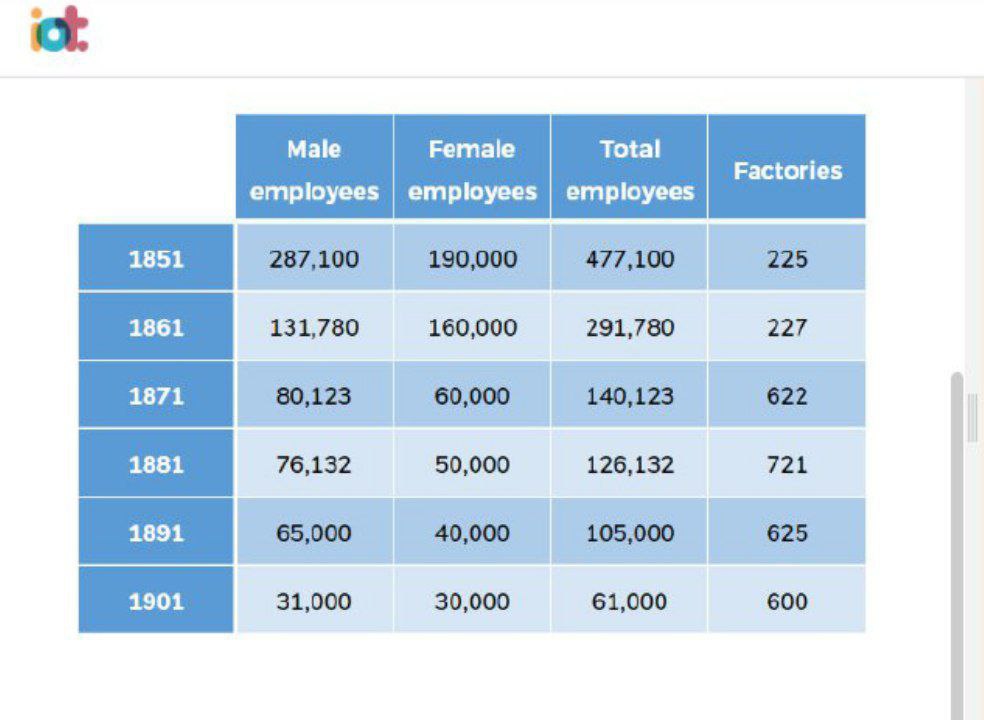The presented table provides information on a multitude of factories and employees between 1851 and 1901 in countries such as England and Wales.
Overall, it is clear that, the majority of employees were males rather than females. Also, it is shown that the number of male and female employees decreased every decade, meanwhile, factories fluctuated on its number.
In 1851, the number of man employees were more than woman employees which was 287,100. However, a decade later, a multitude of male employees declined sharply to 131,780. In 1901, they went down significantly to 31000, but still more than female employees.
Female employees, constituted 190,000 of the total employees in a year of 1851. In 1871, two decades later, the number of female employees dropped for 130,000 which was a substantial decreasement (60,000). Starting from 1871 to 1901, they fell steadily every decade for 10,000 and in 1901, the number of them were 30,000 and only 1,000 less than male emloyees.
Because of the fallings of employees, the total number of empoyees dropped dramatically from 477,100 to 61,000 including all years.
In 1851, the number of factories were 225 and in 1861, its number almost remained the same which was 227. In 1881, factories grew rapidly to 721 and reached its peak.
i appreciate your feedback!
Overall, it is clear that, the majority of employees were males rather than females. Also, it is shown that the number of male and female employees decreased every decade, meanwhile, factories fluctuated on its number.
In 1851, the number of man employees were more than woman employees which was 287,100. However, a decade later, a multitude of male employees declined sharply to 131,780. In 1901, they went down significantly to 31000, but still more than female employees.
Female employees, constituted 190,000 of the total employees in a year of 1851. In 1871, two decades later, the number of female employees dropped for 130,000 which was a substantial decreasement (60,000). Starting from 1871 to 1901, they fell steadily every decade for 10,000 and in 1901, the number of them were 30,000 and only 1,000 less than male emloyees.
Because of the fallings of employees, the total number of empoyees dropped dramatically from 477,100 to 61,000 including all years.
In 1851, the number of factories were 225 and in 1861, its number almost remained the same which was 227. In 1881, factories grew rapidly to 721 and reached its peak.
i appreciate your feedback!

photo_53619159381878.jpg
